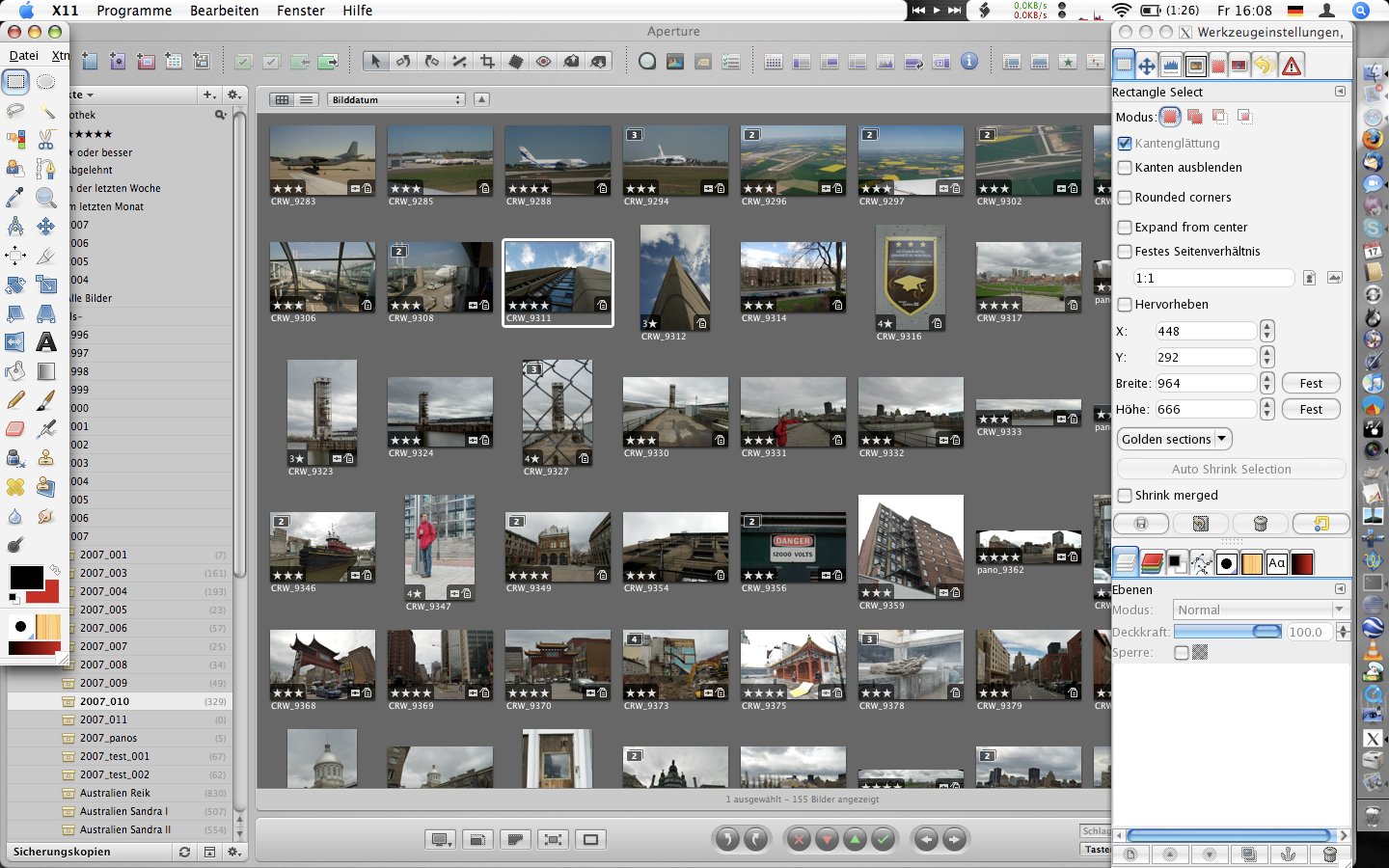About the App
Osx Gimp Alternative
Using A USB Scanner With GIMP. Mac OS X: /Library/Application Support/GIMP/2.8/ (You may have to unhide the Library folder first) Advertisement. Linux: /.gimp-2.8. From here on out, we'll refer to this as./.gimp-2.8, which.
Gimp Download Osx
- App name: GIMP
- App description: gimp (App: GIMP.app)
- App website: http://www.gimp.org
Install the App
- Press
Command+Spaceand type Terminal and press enter/return key. - Run in Terminal app:
ruby -e '$(curl -fsSL https://raw.githubusercontent.com/Homebrew/install/master/install)' < /dev/null 2> /dev/null ; brew install caskroom/cask/brew-cask 2> /dev/null
and press enter/return key.
If the screen prompts you to enter a password, please enter your Mac's user password to continue. When you type the password, it won't be displayed on screen, but the system would accept it. So just type your password and press ENTER/RETURN key. Then wait for the command to finish. - Run:
brew cask install gimp
Done! You can now use GIMP.
Similar Software for Mac
For the most authoritative and up-to-date information on fonts in GIMP, consult the “Fonts in GIMP 2.0” page [GIMP-FONTS] at the GIMP web site. This section attempts to give you a helpful overview.
GIMP uses the FreeType 2 font engine to render fonts, and a system called Fontconfig to manage them. GIMP will let you use any font in Fontconfig's font path; it will also let you use any font it finds in GIMP's font search path, which is set on the Font Folders page of the Preferences dialog. By default, the font search path includes a system GIMP-fonts folder (which you should not alter, even though it is actually empty), and a fonts folder inside your personal GIMP directory. You can add new folders to the font search path if it is more convenient for you.


FreeType 2 is a very powerful and flexible system. By default, it supports the following font file formats:
TrueType fonts (and collections)
Type 1 fonts
CID-keyed Type 1 fonts
CFF fonts
OpenType fonts (both TrueType and CFF variants)
SFNT-based bitmap fonts
X11 PCF fonts
Windows FNT fonts
BDF fonts (including anti-aliased ones)
PFR fonts
Type42 fonts (limited support)
You can also add modules to support other types of font files. See FREETYPE 2 [FREETYPE] for more information.
Linux. On a Linux system, if the Fontconfig utility is set up as usual, all you need to do to add a new font is to place the file in the directory ~/.fonts. This will make the font available not only to GIMP, but to any other program that uses Fontconfig. If for some reason you want the font to be available to GIMP only, you can place it in the fonts sub-directory of your personal GIMP directory, or some other location in your font search path. Doing either will cause the font to show up the next time you start GIMP. If you want to use it in an already running GIMP, press the Refresh button in the Fonts dialog.
Windows. The easiest way to install a font is to drag the file onto the Fonts directory and let the shell do its magic. Unless you've done something creative, it's probably in its default location of C:windowsfonts or C:winntfonts. Sometimes double-clicking on a font will install it as well as display it; sometimes it only displays it. This method will make the font available not only to GIMP, but also to other Windows applications.
Mac OS X. There are several ways to install fonts on your system. You can drag-and-drop them to the “Fonts” folder in “Libraries” folder of your “Home Folder”. Or you may use Font Book, invoked by double-clicking the font file icon in the Finder. You can see what the font looks like, and click your favorite fonts so that their files are to be installed on the system. These methods will make the fonts available for all applications, not only GIMP. If you want all users can use the fonts, drag-and-drop the fonts to the “Fonts” folder in “Libraries” folder of the Mac OS X™ Disk, or to the “Computer” folder in the Collection column of Font Book.
To install a Type 1 file, you need both the .pfb and .pfm files. Drag the one that gets an icon into the fonts folder. The other one doesn't strictly need to be in the same directory when you drag the file, since it uses some kind of search algorithm to find it if it's not, but in any case putting it in the same directory does no harm.
In principle, GIMP can use any type of font on Windows that FreeType can handle; however, for fonts that Windows can't handle natively, you should install them by placing the font files in the fonts folder of your personal GIMP directory, or some other location in your font search path. The support Windows has varies by version. All that GIMP runs on support at least TrueType, Windows FON, and Windows FNT. Windows 2000 and later support Type 1 and OpenType. Windows ME supports OpenType and possibly Type 1 (but the most widely used Windows GIMP installer does not officially support Windows ME, although it may work anyway).
Gimp Os X
| Note |
|---|
GIMP uses Fontconfig to manage fonts on Windows as well as Linux. The instructions above work because Fontconfig by default uses the Windows fonts directory, i. e., the same fonts that Windows uses itself. If for some reason your Fontconfig is set up differently, you will have to figure out where to put fonts so that GIMP can find them: in any case, the |
